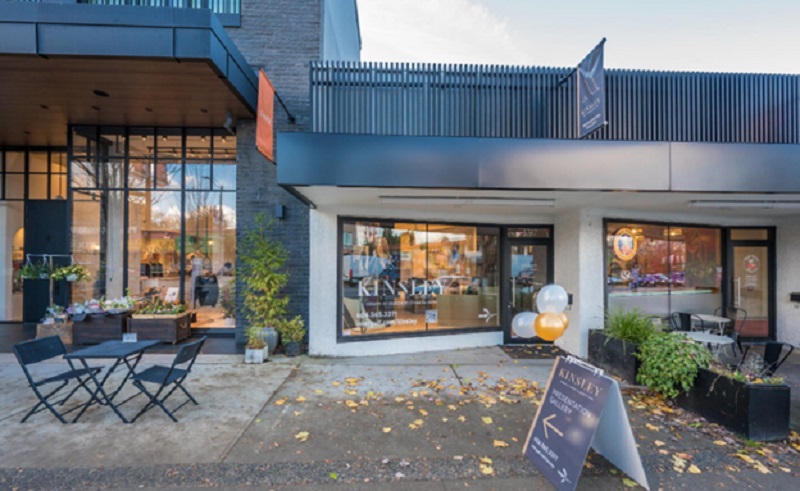When considering a retail space for lease, the importance of location cannot be overstated. A well-positioned property can attract consistent footfall, offer high visibility, and deliver accessibility that draws in customers. Whether the setting is an urban high street, a suburban shopping strip, or a stand-alone building along a busy road, the right location sets the stage for business growth. Choosing a spot that aligns with customer behaviour and local demographics significantly increases the chances of a retail venture thriving.
Shoppers naturally gravitate towards convenience. A retail space close to public transport links, ample parking, or established anchor stores can greatly enhance a store’s appeal. Accessibility not only attracts walk-ins but also helps build customer loyalty over time. The success of a retail business hinges heavily on the synergy between its physical placement and the habits of the local consumer base.
Design and Layout—Creating an Inviting Experience
A good layout can turn a casual browser into a regular customer. When selecting a retail space for lease, pay close attention to how the space is designed. High ceilings, natural light, adaptable interiors, and a logical flow from entrance to exit all contribute to the customer’s in-store experience. These architectural considerations don’t just please the eye—they influence behaviour, engagement, and ultimately, sales.
Moreover, a versatile floor plan allows for creative merchandising, seasonal adjustments, and future expansions. Retailers need to think long-term. Whether launching a boutique or scaling a brand presence, the flexibility to evolve within a space can make a noticeable difference in profitability and brand continuity.
Leasing Terms and Affordability—Balancing Cost with Opportunity
Behind every prime storefront lies a lease agreement that needs scrutiny. It’s essential to understand the financial responsibilities tied to leasing a commercial property. While the charm of an eye-catching frontage or high-traffic area can be compelling, the costs must align with the projected revenue and business plan.
Negotiating a favourable lease—whether in terms of duration, rent-free periods, or maintenance obligations—can provide breathing space for new businesses or reduce operational strain for established ones. While price plays a significant role, value is determined by a combination of cost, location, condition, and long-term prospects.
Surrounding Businesses—Creating Strategic Synergy
Neighbouring establishments often influence the success of a retail venture. When selecting a retail space for lease, evaluate the surrounding businesses. Complementary neighbours can drive shared customer bases. For instance, a café next to a bookstore or a gym near a smoothie bar can naturally generate more traffic for both.
Additionally, being part of a well-curated retail cluster can elevate brand perception. A cohesive environment—where all businesses contribute to a unified shopping experience—can enhance a customer’s willingness to spend time and money in the area.
Market Trends and Timing—Staying One Step Ahead
The retail world constantly shifts. New trends in consumer preferences, digital integration, and economic changes all affect what kind of space makes sense to lease. Some entrepreneurs are embracing pop-up stores or short-term leases to test a market before committing long-term. Others are seeking hybrid spaces that blend retail with experience-based offerings, like workshops or events.
Understanding what’s happening in the broader market can guide smarter decisions. Whether you’re entering retail for the first time or relocating an established brand, it’s critical to anticipate where demand is headed. Market research, local insight, and clear business goals will help identify the most suitable property among many.
Making the Final Choice—A Calculated Leap Forward
Finding the ideal retail space for lease requires patience, vision, and a readiness to act when the right opportunity arises. A well-chosen retail location not only reflects a brand’s identity but also empowers its future. As with any investment, due diligence, realistic forecasting, and strategic planning are the keys to making it work.
Retail success isn’t just about having a great product or stellar customer service. It’s also about placing that offering in the right physical space—one that supports the brand’s story, makes shoppers feel welcome, and lays the foundation for future expansion.
Conclusion:
In a world where online and physical shopping continue to evolve side-by-side, securing the right retail space for lease remains as critical as ever. It is more than just four walls and a window; it’s a living extension of your brand, a direct line to your customers, and a space where real, tangible connections are made. By carefully weighing the location, design, lease terms, and market trends, you can lay the groundwork for lasting success in the competitive retail landscape.





